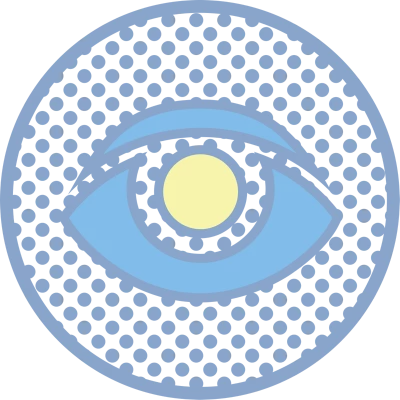Snowflake Cataract: Definition, Causes, and Treatment Options
A snowflake cataract is a rare form of cataract typically seen in younger individuals with uncontrolled diabetes. Named for its distinctive snowflake-like opacities on the eye’s lens, this condition can progress rapidly and cause significant vision problems if not treated. Unlike age-related cataracts, snowflake cataracts are linked to metabolic imbalances and require timely diagnosis and intervention. This guide explores the definition, causes, symptoms, and treatment options to help manage and prevent vision loss effectively.
What is a Snowflake Cataract?
Snowflake cataract is a type of cataract common among diabetic individuals, especially young people. It is characterised by the occurrence of opacities in the form of snowflakes in the lens cortex. This form of diabetic cataract generally develops faster in comparison to the development of age-related cataracts.
The snowflake cataract means cloudiness that leads to blurred vision, often needing prompt evaluation and, in some cases, surgical intervention. The acquired snowflake cataract, as opposed to the congenital variant (which can be present at birth and is hereditary), is more often seen, including metabolic imbalances of some kind. It is also coded in the ICD-10 under code H26.8 to indicate other specified cataracts.

Snowflake Cataract Causes
Diabetes
The most frequent cause of snowflake cataract is poorly controlled diabetes. Excess glucose in the bloodstream enters the eye’s lens, where it is converted into sorbitol. This causes water retention in lens fibres, leading to swelling and the development of opacity.
Osmotic stress
Osmotic stress takes place in the lens when there is an accumulation of fluid due to sugar metabolism. This distorts the lens structure, thereby leading to the development of snowflake-like opacities.
Age
Commonly, snowflake cataracts are seen in younger diabetic patients. However, ageing may also lead to alterations in the lens structure, therefore becoming vulnerable to different cataracts.
Eye injuries
Oxidative stress can be provoked through trauma and leads to impairment of the natural defence system of the lens. This leads to opacification, not only in those who have no predisposing systemic disease, but also in those with some systemic disease, such as diabetes mellitus.
Steroid medications
It has also been known that the continuous use of corticosteroids leads to the development of cataracts. They disrupt the metabolism of proteins in the lens, speeding up opacity.
Smoking and alcohol use
Free radicals are found to be introduced into the eyes by tobacco smoke and excessive alcohol drinking, which damages lens proteins and predisposes to a variety of different types of cataracts, including snowflake cataracts.
Family history
There are also genes involved. Patients having a record of cataracts in their family, especially diabetic or lamellar type, have an increased risk of developing this type based on inherited metabolic characteristics.
Snowflake Cataract Risk Factors
Rapid Progression
Unlike age-related cataracts, snowflake cataracts can develop rapidly over weeks or months, particularly in cases of uncontrolled blood glucose levels.
Vision Loss
The clouding of the lens leads to significant vision impairment, including difficulty with daily activities, which may progress to near-blindness if left untreated.
Snowflake Cataract Symptoms
Blurry or cloudy vision
One of the first symptoms is that it affects tasks like reading or recognising faces and may fluctuate with blood sugar levels.
Double vision
Patients often report seeing two images of a single object, a condition that may worsen in dim lighting.
Poor night vision
Difficulty seeing in low-light conditions is common and can pose challenges in driving or moving around safely at night.
Changes in colour perception
Colours may appear faded or yellowed, affecting visual clarity and contrast sensitivity.
Halos or glare around lights
Halos and light sensitivity, particularly around headlights or streetlamps, are frequent complaints in patients suffering from snowflake cataract, limiting their mobility and independence.
Snowflake Cataract Diagnosis
Visual Acuity Test
An eye test measures the sharpness of vision and helps identify any decrease in vision due to lens opacity.
Slit-Lamp Examination
Slit lamp examination allows the ophthalmologist to examine the front part of the eye under magnification, clearly identifying snowflake-shaped opacities.
Retinal Examination
To rule out diabetic retinopathy or other co-existing conditions, a dilated eye exam is often conducted.
Imaging Tests
Advanced imaging, including Optical Coherence Tomography (OCT), may be used to assess the structure of the retina and lens in more detail.
Treatment for Snowflake Cataracts
Phacoemulsification
The most commonly used surgical method involves emulsifying and removing the cloudy lens using ultrasound and replacing it with a clear intraocular lens (IOL). This is a standard cataract treatment and is also effective for snowflake cataracts.
Laser-assisted cataract surgery
This technology offers greater precision and is especially useful for complex cataract cases. It reduces the risk of complications and supports faster healing. Learn more under our section on Laser Cataract Surgery.
IOL Implants
Post-removal, the natural lens is replaced with an intraocular lens that corrects vision. Choices vary based on the patient’s lifestyle, refractive needs, and underlying eye health.
Preventing and Managing Snowflake Cataracts
Manage Diabetes
Keeping blood sugar levels within the recommended range is the most critical step. Regular blood glucose monitoring and strict medication adherence can help reduce the risk significantly.
Healthy Diet
A diet rich in antioxidants, vitamins C and E, and omega-3 fatty acids supports eye health and reduces oxidative damage to the lens.
Quit Smoking and Reduce Alcohol
Avoiding smoking and limiting alcohol intake can help preserve the transparency of the lens and reduce the risk of all cataract types.
Sunglasses and Sun Protection
Ultraviolet light can speed up lens protein breakdown. Using UV-protective sunglasses lowers the risk of cataract formation.
Regular Eye Exams
Routine check-ups, especially for individuals with diabetes or a family history of cataracts, enable early detection and timely intervention. Explore Diabetic Retinopathy for associated complications.
When to See a Doctor for Snowflake Cataract
Consult an ophthalmologist if you experience blurry vision, difficulty seeing at night, or any sudden changes in visual clarity. Timely diagnosis ensures a wider range of treatment options and better long-term outcomes. If you’re managing diabetes, your eye care plan should include at least one annual comprehensive eye exam.
Frequently Asked Questions (FAQs) about Snowflake Cataract
What are the main differences between snowflake cataracts and other types of cataracts?
Snowflake cataracts develop rapidly and are typically linked to poorly controlled diabetes in younger individuals. Unlike age-related cataracts, they feature distinctive snowflake-shaped opacities in the lens cortex and can significantly impair vision within a short period.
Is surgery the only treatment for snowflake cataracts?
Yes, once vision becomes significantly impaired, cataract surgery is the most effective treatment. Non-surgical management, like blood sugar control, may help delay progression, but surgery remains the only way to restore clear vision in advanced cases.
How long does it take to recover from snowflake cataract surgery?
Recovery usually takes 4 to 6 weeks, though most patients notice improved vision within a few days. Post-operative care, such as using prescribed eye drops and attending follow-ups, helps ensure smooth healing and prevents complications.
Can snowflake cataracts cause progressive vision loss if left untreated?
Yes, untreated snowflake cataracts can lead to progressive vision loss. As the lens becomes more opaque, it blocks light from reaching the retina, severely reducing vision and affecting daily functioning.
What enzyme causes snowflake cataracts?
Aldose reductase is the key enzyme implicated in snowflake cataracts. It converts excess glucose into sorbitol in the lens, leading to osmotic stress, swelling, and opacity, especially in individuals with uncontrolled diabetes.
This information is for general awareness only and cannot be construed as medical advice. Recovery Timelines, specialist availability, and treatment prices may vary. Please consult our specialists or visit your nearest branch for more details.Insurance coverage and associated costs may vary depending on the treatment and the specific inclusions under your policy. Please visit the insurance desk at your nearest branch for detailed information.

Do not ignore eye trouble!
Now you can reach our senior doctors by booking an online video consultation or a hospital appointment
Book an appointment now